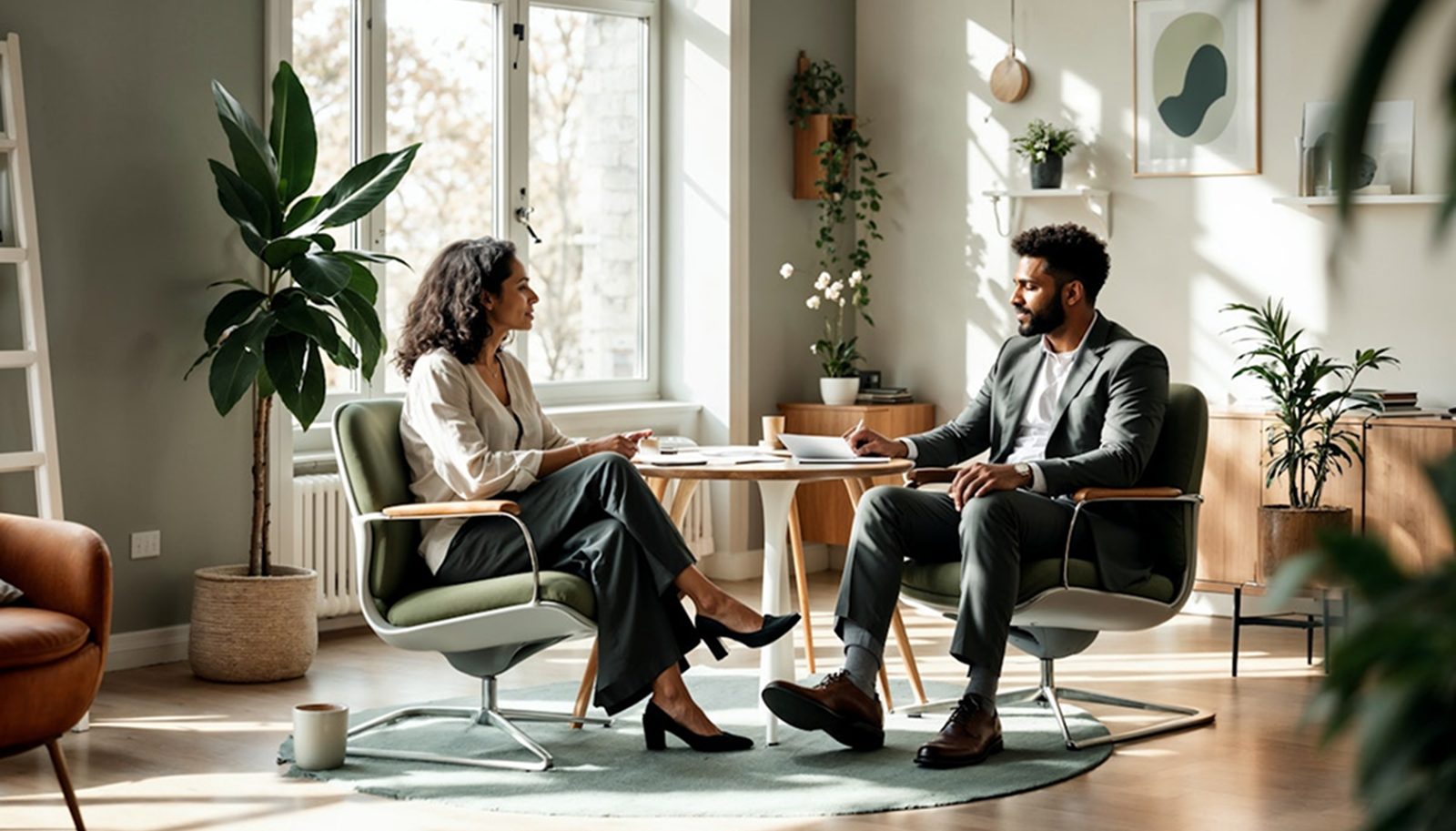As the economic downturn continues to take its toll, it has become critical for professionals in this industry to find any possible cost-effective solutions. Gone are the days when simply listing properties on a website or relying on traditional marketing strategies would guarantee success. Could reusing and repurposing techniques revitalize your real estate business and save you money during these challenging times?
The untapped potential of upcycling
Historically, people would upcycle out of necessity, reusing materials to create new items when resources were scarce. Upcycling has become a necessary response to economic issues in modern times, providing an alternative to the throwaway culture.
What is upcycling?
Each period in history has records of upcycling practices with a different name because repurposing is not something we created at the turn of the century. However, the term “upcycling” was coined in 1994 by German engineer Reiner Pliz, who mentioned it for the first time in an interview with architecture and antiques magazine Salvo. Recycling at the time diminished the value of old or used products, so he suggested new value must be added instead, leading to the term “upcycling.” Upcycling can help reduce waste and promote conscious consumption. It can also help support local businesses and create opportunities.
“I call recycling down-cycling. We need up-cycling, thanks to which old products are given a higher, not a lower, value.” Reiner Pliz
Upcycling traditionally refers to renovating or repurposing existing buildings or properties to create more sustainable spaces in the real estate business. Instead of tearing down old structures and constructing new ones, upcycling focuses on utilizing the existing resources and materials in a creative way to add value and breathe new life into the property.
Traditional upcycling methods in real estate include adaptive reuse, renovations, salvaging and repurposing materials, and sustainable land development.
But making improvements based on available resources is not limited to converting old, dilapidated factories into trendy loft apartments or revitalizing underused urban areas to promote sustainable land use. Today, savvy realtors embrace innovative techniques to breathe new life into their businesses.
Different examples of effective upcycling for real estate agents
Upcycling has changed its original meaning and could be applied to other areas of the real estate business to save you more time and money. It is a synonym for creating sustainable solutions, reusing things, and preventing excess or unnecessary spending.
How to upcycle your real estate website?
As surprising as it may seem, you can treat your website redesign as a form of upcycling. You might have a real estate website that is a few years old and needs updating, but you are not rushing to make improvements. Believe it or not, revamping your site is a process that is the perfect definition of upcycling: your new website can be based on the old framework. It doesn’t have to be completely different. It is well recommended to audit your website first and see which elements still work or could be reused and which ones need replacing.
If this task seems too complicated and you could use a friendly shoulder to lean on – look no further than Placester. There is a Do It For Me (DIFM) option, where your website is migrated, updated, or created by a team of professionals. Every bit of “old” content is transferred, too, unless you wish to give it a bit of “lifting.” or create an updated version of posts and graphics. The point is that Placester experts will help you make the right decision, and nothing on your site has to be done from scratch. Rely on elements you are familiar with and popular with your customers.
When you move your website to a different provider and save money (if the current one costs you an arm and a leg), which would also be upcycling. Make necessary content updates, refresh layouts, optimize for SEO, enhance user experience, and improve navigation for better conversions and site performance. In one word: upcycle. Think also of:
- Green web hosting: Consider hosting your website with a green web hosting provider that uses renewable energy sources to power their data centers, reducing your website’s carbon footprint.
- Energy-efficient design: Optimize your website’s design to be more energy-efficient, ensuring faster loading times and reduced user energy consumption.
- Sustainable web development: Use sustainable development practices by reusing code libraries, minimizing unnecessary scripts, and optimizing images to reduce data transfer and improve performance.
- Virtual tours: Offer virtual tours for properties to reduce the need for physical visits, minimizing travel-related emissions and providing a convenient experience for potential buyers.
- Paperless transactions: Encourage paperless transactions for contracts and agreements, reducing paper waste and promoting digital document signing.
- Community involvement: Showcase your involvement in local community initiatives or sustainability projects to build trust with potential clients who value socially responsible businesses.
- Social responsibility: Highlight any charitable donations or initiatives your real estate business supports, focusing on causes related to environmental conservation or community development.
- SEO and local search: Optimize your website for local search to attract clients interested in sustainable living and eco-friendly properties.
This approach is safe (you make minute, step-by-step changes) and thrifty (you split expenses and avoid forking out for things you might not need) but also prudent and frugal. You can spread the changes over time: the task will be more manageable, and the real estate website redesign concept will be less overwhelming.

How to upcycle your budget?
What upcycling has to do with planning your expenses? Well, you probably have a set budget and can’t stretch it forever. Neither can you neglect it and just erase previous months to start from scratch. You can go over your expenses to check if you don’t spend too much, weed out unnecessary spending or replace them with cheaper alternatives. Make tweaks to your finances, cut here, add there, to make valuable improvements. If you don’t know where to start – follow Placester self-audit to see where your money leaks in your real estate business. Employ different cost-saving strategies to be sure you don’t spend in excess and your business is profitable in the long run.
- DIY – by taking on some of the work yourself, you may save some serious cash and significantly improve your budget. It also lets you be more conscious of what goes into certain projects. You can do many things yourself: create content, DIY gifts, and make your website (with an intuitive, codeless website builder, it is a piece of cake).
- Reduce maintenance costs.
- Check for any cost overlap.
- Assess your other tangibles.
How to upcycle your marketing?
Apply the 80/20 rule, aka the Pareto principle, to your marketing. It says that 80% of your results are a product of 20% of your actions. Discover the 20% of content that interests your audience and spend only 20% of your time producing it, then 80% on redistribution.
- Turn posts into infographics, videos, ebooks, and more.
- Post your blog on LinkedIn, Medium, Quora, or Reddit.
- Conduct live webinars and host podcasts.
- Update old posts with new, up-to-date information or develop new content ideas based on old posts.
- You can also break the blog post into smaller snippets or split it into a series of e-mails.
- Promote older related posts in combination with the new ones.
Go back into your blog archive and see if any closely related posts or topics tie nicely to the current one. Use these instances to connect old thoughts to new ones while driving traffic to your old and new posts. This also shows your audience that you have a well-rounded content strategy. You can also write a guest post based on previously published articles to promote your blog.
PRO TIP: The best kind of content for repurposing is evergreen content. Evergreen content is easily shareable and reusable because it lacks timeliness or cultural relevance. In other words, a topic that works just as well for your audience in 3 years without significant updates is the best way to go! When you re-share or repurpose content online, add insight or value to each new iteration. Your audience won’t be too happy about seeing the same content in 100 different ways, so get creative with it!
- Prepare reusable campaigns to save time and energy on social media marketing.
Don’t just list a new property, but promote it. Describe how unique the house is and how the small bedroom on the first floor could be used as a study or a playroom. Also, take advantage of your success and feature happy buyers on your social media. Their excitement can be infectious. Build a community by providing value. Enable a two-way relationship between you and your audience to grow loyal followers. Therefore, refrain from solely publishing new home listings. Instead, share helpful tips for new homeowners. Showcase specialists on your platform and share their guidance. Make an effort to equip your home buyers with the necessary knowledge, tools, and resources to thrive throughout their home-buying experience. Encourage interactions through audience polls, Q&A series, and monthly #AskMeAnything. This is the best way to foster a two-way relationship between you and your audience.
- Green marketing materials
Design your marketing materials using recycled or sustainable items and promote your eco-friendly focus in your branding and advertising. Tote bags made out of a coffee sack, printing on recycled paper, and minimizing the use of plastic are just some of the ideas to implement.
Benefits of upcycling for real estate agents
As sustainable practices gain more importance in business and the search for cost-effective techniques is in full swing, upcycling will likely become an increasingly attractive and necessary approach for agents. It has numerous benefits:
- Cost-effectiveness: Upcycling can be more cost-effective than creating something from scratch or buying new items, as existing ones can be repurposed.
- Time-saving: Upcycling can work as a shortcut ingredient - you don’t need to invent a new concept- it is enough to update or improve an existing one.
- Community engagement: Engaging in the local community upcycling projects and initiatives.
- Enhanced market appeal: Unique content and niche specialization often attract more attention from potential buyers or tenants due to their distinctive character.
- Positive reputation: Real estate businesses that embrace upcycling gain a positive reputation as environmentally conscious and socially responsible entities.
- Lead by example: Integrate upcycling practices into your daily routine and showcase your commitment to sustainability, setting an example for clients and colleagues.
Upcycling is more than just a passing trend; it is a movement that promotes sensible management, business opportunities, sustainable profits, and a community engagement that intends to make a real difference in the world.





